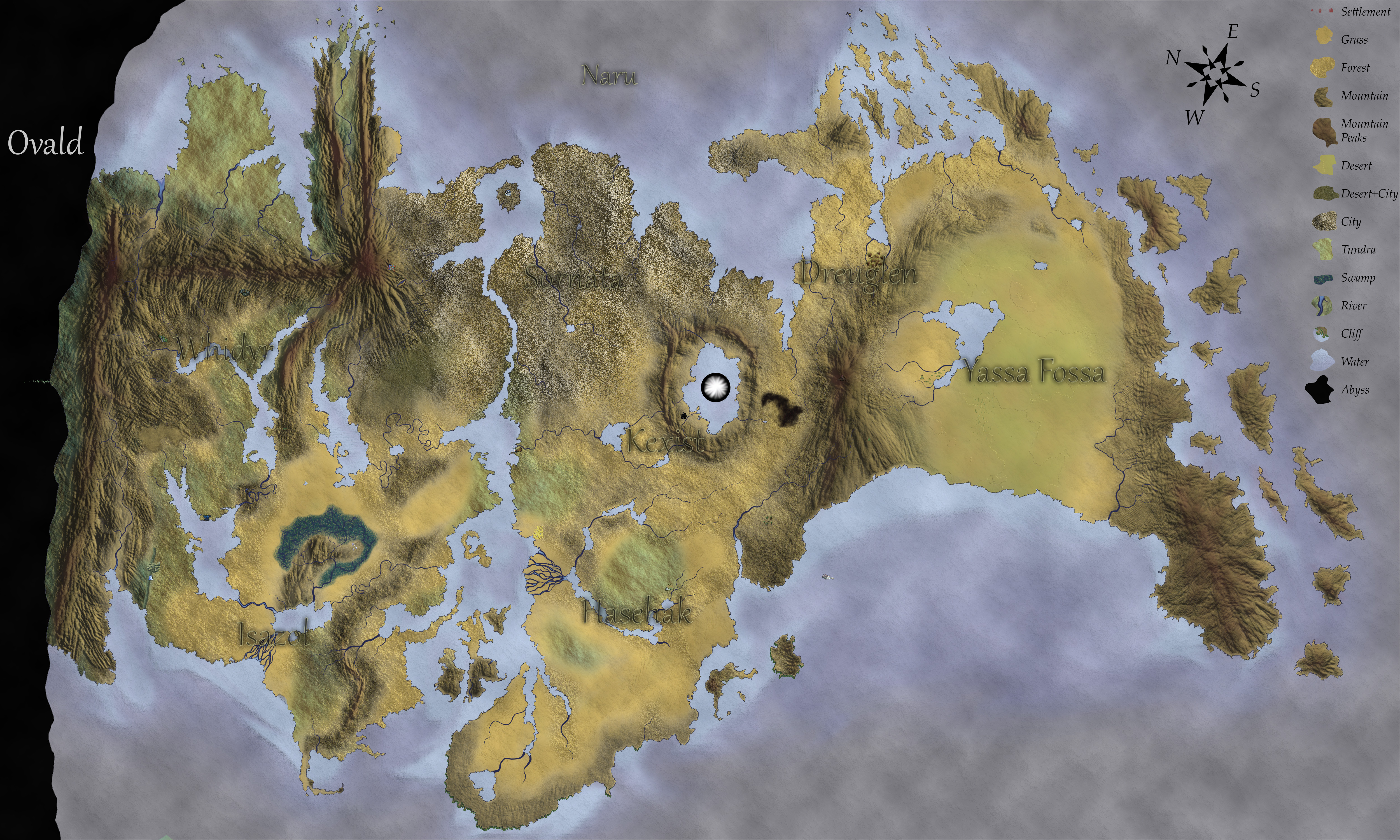Alsow
Anatomy & Morphology
Lost in the endless sands of the Yassa Fossa, one may hear whistful moans of the dead carry on the night air. In the distance, specters of the desert silently wander in search of their scattered bones. That, of course, is a tale not too dissimilar to western folklore behind Jairoth. But instead of soul-sucking parasites, the eastern sands are home to the alsow.Alsow, who stand around 4 meters, are not spirits but oql deer. The glow they give off comes from the wispy ends of their sand-colored dull-emerald fur. While up close one can see the younger fur, distance affords sight to the long-since-grown fur. They emit light to find one another, but will quickly become dim and blend in with the sands when threatened.
They wander silently on long limbs that end in single, pointed toes. At any one time, they will be standing on a single grain of sand for each foot. The pressure they exert is near non-existence while standing, a sort of reverse of the normal greater surface area meaning less exertion of pressure on any one point. However, when they sit or lay down, their full weight is felt.
Perception
Their sense of aura seems to be as vast as the desert. While that is an exaggeration, their antlers do provide a sort of fractal radar for their aural sense. Their antlers, which grow up like a thin cactus, sprout long hairs that they use to sense the wind’s direction. They have a sense with these hairs for oncoming sandstorms, changing their trajectory to always avoid them.While female and male alsow lose their antlers in the biting dead season, they will regrow come the warmth. More aggressive alsow rub their antlers free of many hairs. This, combined with the scars from fights, gives them a gangly and ferocious appearance.
Speech
The ghost story moans come from a small language spoken by a few alsow. They are very good at mimicking the sounds they hear around them, like parrots, mockingbirds, or miftyanya. A few heard the distant wind-worn sounds of calls from other beings and molded their words around them, creating the moaning language.In addition to their mimicry, the alsow are notoriously stellar at throwing their voluminous voices. Not only can they broadcast over dunes and oases, they can choose where the sound comes from. When predators come close after espying them from a distance, a quick pant or huff from over yonder has the threat quickly confused and lost.
Society
The alsow of the Suigigjake tribe aren’t the most talkative bunch. Their culture developed apart from the civilized, so they are strange to interact with. They like to keep everything to themselves, something you as one of the Dreulbe faith would be familiar with. It took a lot of coaxing from them to tell me anything. I did find that their mating grounds were pretty far afield. The place they know instinctively can be found on your map here.
“Ruination of a united people. Under the rainbowed talon of death, we close their eyes and shriek. I will veil the sands, though the wind blows.“ Say that and they’ll open dialogue with you on what they know. You’ll find them mostly skirting the edges of a town at night. I don’t know how they have this information, this random tribe that predated the ------- by hundreds of years. One of life’s great mysteries I suppose. They can also be guides, at a steep price, to the temples of Suge. Go there during the right time of night and you may find the zuyg truly bless. All the other information I’ve found is detailed in this scroll, but it will cost you extra.
Mating & Social Structure
Once a year, a collective alsow will be drawn to their mating grounds. This event will bring hundreds to a secretive location only known by them. All will vie for one another's affections; a large debate, sometimes turned violent, will be had for who should be with who. Violence is an option chosen by the strong against the weak, but most will only need to whip words against their opponent or to puff up themselves. Under the clamor of all this at once, one may be able to hear individual rhythms.After mates are paired off, they leave to find a den. After what’s done is done, the pair will stay together near that den for the next few seasons. If they are of the same sex, or otherwise a child is not produced, they will part ways. However, if there is a viviparous birth they will stay for a season longer to rear the offspring.
Once the child is capable of speech, the father will leave the mother. She will stay with her young for five aruz before they will be left to wander alone.
Place in Mixed and Modern Society
Modern societies afford many comforts everyone wants. However, Alsow do not have the internal craving for socialization and community most rela do. As such, they will prefer to stay close, but not in, towns and cities. Many have traditionally taken up occupations that have required long treks across the sand seas; traders, predominantly, but also messengers, far-seers, and delvers.Modern advances in vehicles have taken a lot of their work, but many remain steadfast in their traditions. Many villages still enjoy a visit from a wayfaring trader, a menagerie of goods that may or may not be valuable or just what someone needs.





I can visualize a huge deer in the distance, surrounded by a pale glow, its antlers like branching cacti... Easy to see how they became the source of ghost stories.
The ghost stories idea came after the creation of this creature. Actually, I came up with the glowing hair idea while writing this article, even though I've had several characters be this creature; they've been iny head for years, glad to finally get them down in an article. The ghost stories came naturally after that.